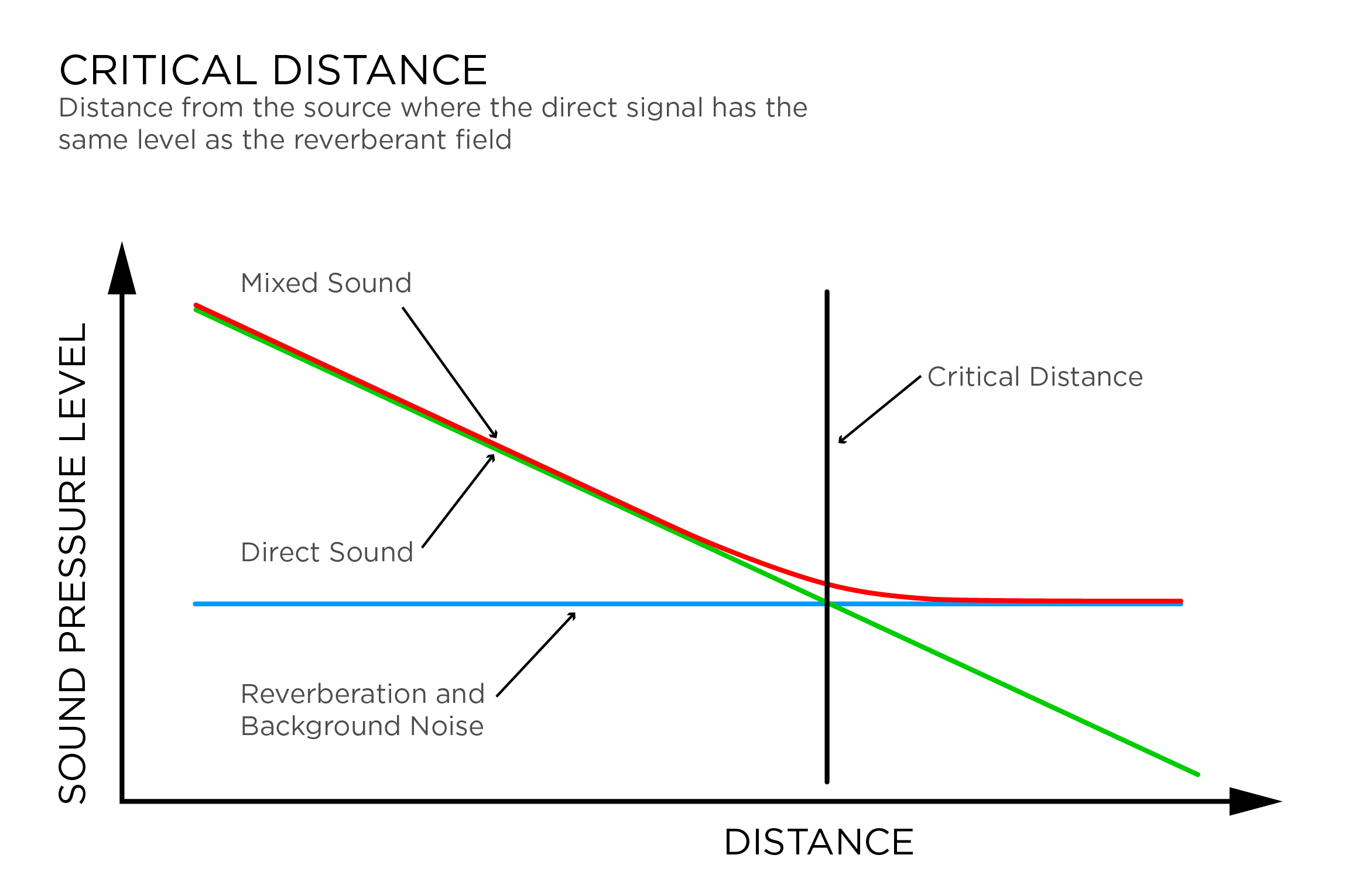As discussed in our previous post, there are numerous microphone models and styles designed to suit specific applications. The appropriate microphone for your space should include frequency response that covers the source’s spectrum, enhancing desired frequencies while rejecting unwanted frequencies. Your chosen microphone should be capable of withstanding the source’s maximum level. The microphone should also have adequate sensitivity, as well as sufficient voltage to the input stage to which it is connected.
Microphones should be placed as close as possible to the source, while avoiding saturation or distortion. In general, the distance should be less than the room’s critical distance, as depicted in the following graphic.

Proper microphone placement is important for avoiding interference – a phenomenon that occurs when multiple waves superimpose. Interference can happen both acoustically and electronically, and can be prevented by verifying that all microphones have the same polarity while avoiding picking up the same source with more than one microphone.
Early reflections also cause interference. The result of interference, which is also caused by polarity and picking up a signal with two microphones as described in the previous paragraph, results in comb filtering. Comb filtering can be avoided using the 3-1 rule: the distance between two adjacent microphones should be at least 3x the distance from one microphone to the source. Automatic mixers are also effective for reducing or eliminating interference.
There are many factors involved in the selection and installation of microphones. To learn more about microphones and other audio tips and tricks, check out our Audio 101 tutorials on Cornerstone.